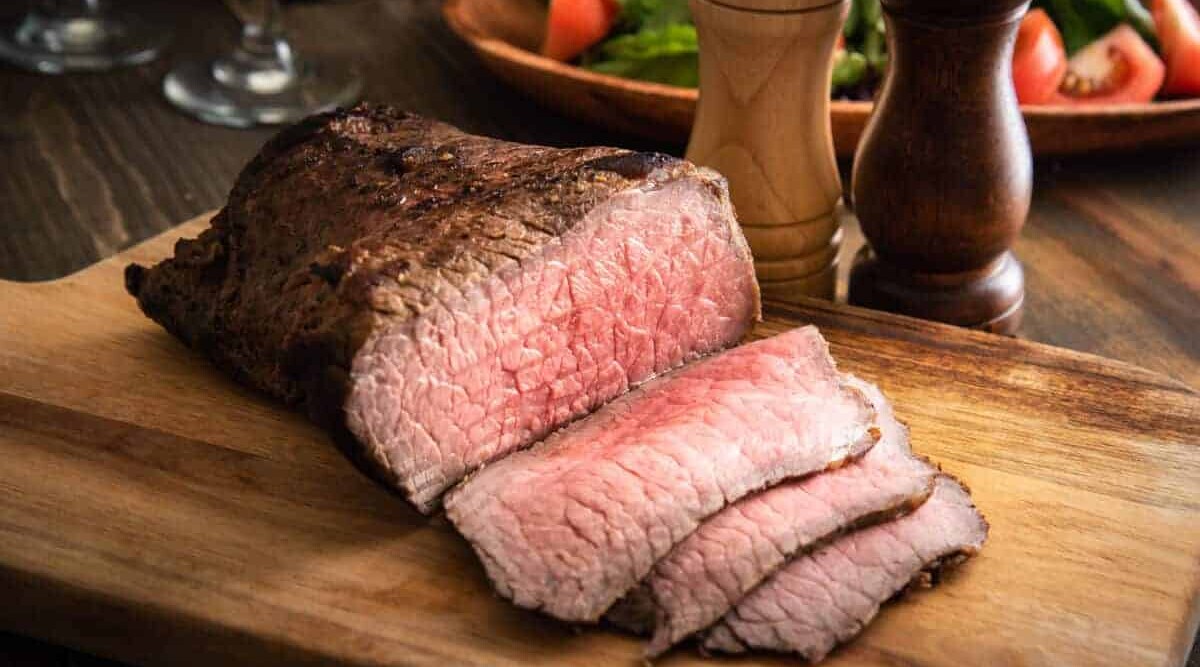
The Bottom Round roast, a substantial and lean cut from the cow’s rump and hind legs, is affordable and abundant. Often overshadowed by its more popular counterparts like the tender Rib roast or the flavorful Chuck roast, the Bottom Round is poised to make a culinary splash.
This cut is ideal for those who appreciate lean meat with generous portions at an affordable price. It’s a versatile cut, serving as a hearty main dish or a key ingredient in sandwiches and salads. It’s also one of the best cuts for making jerky.
In this article, we take a deep dive into the details of the Bottom Round roast. We explore its origins on the cow, alternative names, how to prepare it for cooking, and provide tips on where to purchase it.
Continue reading to uncover the potential of the Bottom Round roast and learn how to make the most of this underappreciated cut.
Key Takeaways
- The Bottom Round roast is a lean and tough cut of meat that comes from the rear leg muscle of the cow.
- It is best cooked using slow, moist-heat techniques such as braising, smoking, and basting.
- It’s also known as Bottom Round Rump roast, Silverside, or Rump roast.
- The lack of fat in the cut makes it subtle in flavor, but when cooked well, it can be just as tender as other roasts.
- People commonly use the Bottom Round roast for roasts, cold cuts in sandwiches, and beef jerky.
- The cut is versatile and can be used in various dishes, making it a cost-effective option for feeding a large group.
Jump to:
- 1 Key Takeaways
- 2 My Personal Take on Bottom Round Roast
- 3 What is Bottom Round Roast?
- 4 Where Does Bottom Round Roast Come from on the Cow?
- 5 Alternative Names
- 6 Flavor, Texture, Fat Content, and Tenderness
- 7 Typical Uses
- 8 Nutrition
- 9 Portion Size: How Much Per Person?
- 10 How to Prepare Bottom Round Roast for Grilling or Smoking
- 11 How to Cook it on a Grill or Smoker
- 12 Buying Bottom Round Roast
- 13 Average Price
- 14 Where to Buy it Online
- 15 Conclusion
My Personal Take on Bottom Round Roast
I like the bottom round roast, but it’s not one of my favorites.
A popular use is as a roast to feed a group, but there are many better cuts for me. It’s just too lean and lacks the powerful flavor punch I want from my roasted meats, and it can be a little on the dry side because it’s so lean.
The bottom round roast shines for me as a cut to slice very thinly and eat in sandwiches, with mustard or horseradish and pickles. I also used my Ninja Woodfire on dehydrate to make some into jerky, which was a great success that my family and I loved snacking on.
What I like about it is it’s cheap compared to many other cuts of beef, so cooking some up to save for sandwiches in my packed lunches for work makes it economical. But I would prefer to spend more on a better cut for roasting.
What is Bottom Round Roast?
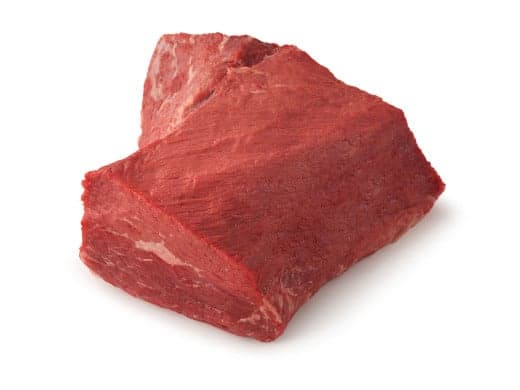
Beef bottom round is typically very lean, but with slightly more marbling than the top round. It is a large slab of meat taken from a far larger portion of meat, originates from the rear leg muscle of the cow, weighing up to 32lb. It’s then subdivided into smaller pieces, aptly named Bottom Round roasts.
These substantial leg muscles, responsible for much of the steer’s weight and movement, are lean and tough before cooking. It’s a general rule of thumb that the harder a muscle works, the leaner and tougher it is. And bottom round roast certainly follows this rule.
Due to minimal fat and marbling, improper cooking can quickly dry out the meat, turning it from tough to inedibly hard. So, the best methods for cooking Bottom Round roasts include slow, moist-heat techniques such as braising, smoking, and basting.
Avoid grilling it like a steak, unless you intend to repurpose it for something akin to shoe repair.
Where Does Bottom Round Roast Come from on the Cow?
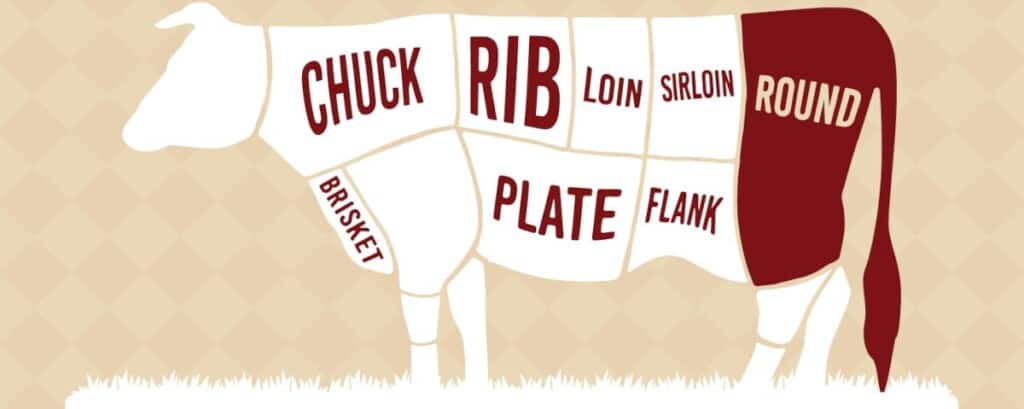
The Bottom Round roast comes from the Round primal, which is the upper portion of the rear legs around the hip and rump area. This part of the leg has muscles that are connected by large interconnective tissues.
One set of muscles is called the upper round, and another set of muscles located on the outside of the leg that tapers at one end, is called the bottom round. It’s here that the Bottom Round roast is found.
Alternative Names
Bottom round roast is also known by the following three names:
- Bottom Round Rump roast, so called as it sits on the upper outside leg where the hip meets the rump.
- Silverside, the British name for this roast, comes from the coloring that is apparent to this cut of meat when the silver skin is left on.
- Rump roast, the name often given to this cut as a generic name for roasts cut from the same area. More often than not, the Rump roast will be a Bottom Round roast.
Your butcher should be familiar with the Bottom Round roast, but if not, just give them the Industry ID, which is UPC 1464. They will then be able to look it up and source it for you.
Flavor, Texture, Fat Content, and Tenderness
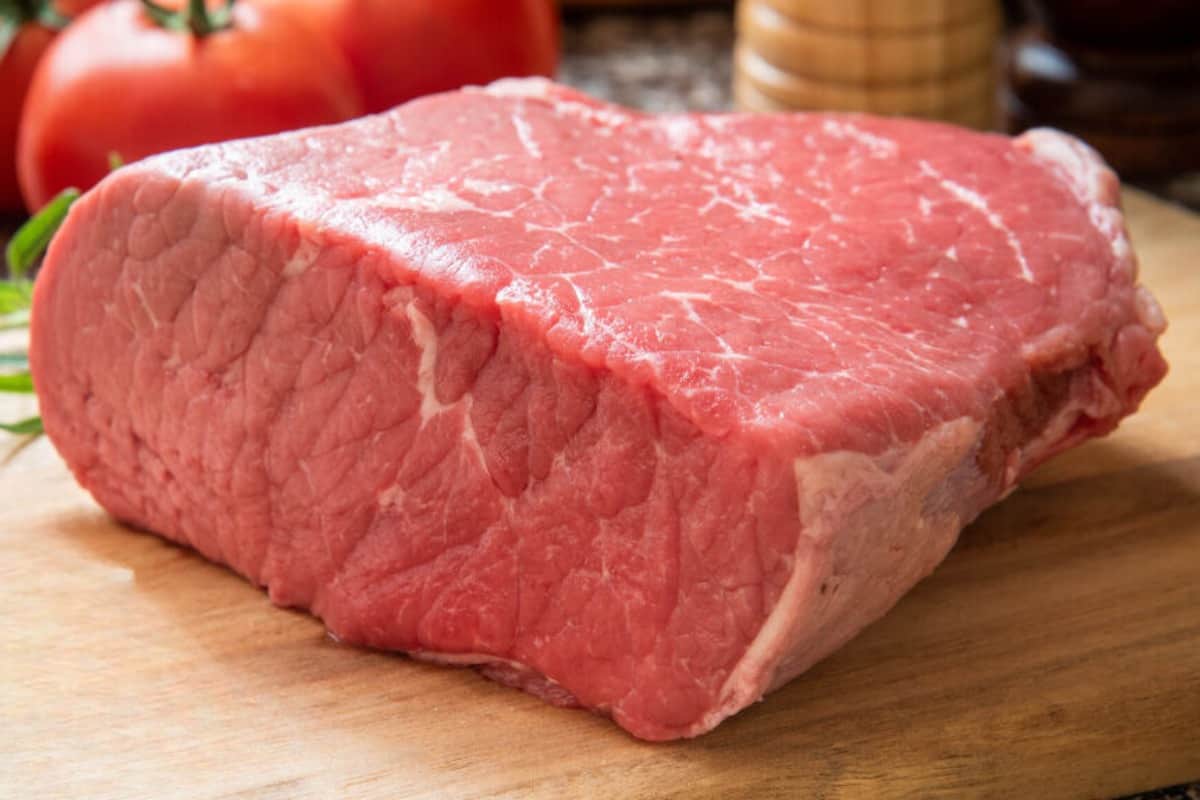
Due to the bottom round roasts lean nature and lack of any discernible fat this cut can be very subtle in flavor. Though you can buy it high grades such as prime that can be relatively well-marbled, but they do come at a premium.
With most roasts it is the fat cap or marbling that adds the flavor, of which this cut has neither. However, the subtle beefy flavor suits particular dishes, or is something some people prefer in general.
It has a lovely delicate flavor if seasoned and cooked correctly, and when cooked well it will be just as tender as any other good roast.
Typical Uses
The Bottom Round roast is mainly used for roasts, cold cuts and beef jerky. The reason for this is its lack of fat and tissue which makes it easy to eat, which is ideal for sandwiches and great tasting jerky.
Nutrition
| Nutrition | Total Amount (Based on 3 oz Serving) | % Daily Value (based on 2000 calories/day) |
|---|---|---|
| Calories | 150 | 8% |
| Saturated Fat | 1.9 g | 10% |
| Protein | 23 g | 46% |
| Iron | 2 mg | 10% |
| Zinc | 4 mg | 25% |
Portion Size: How Much Per Person?
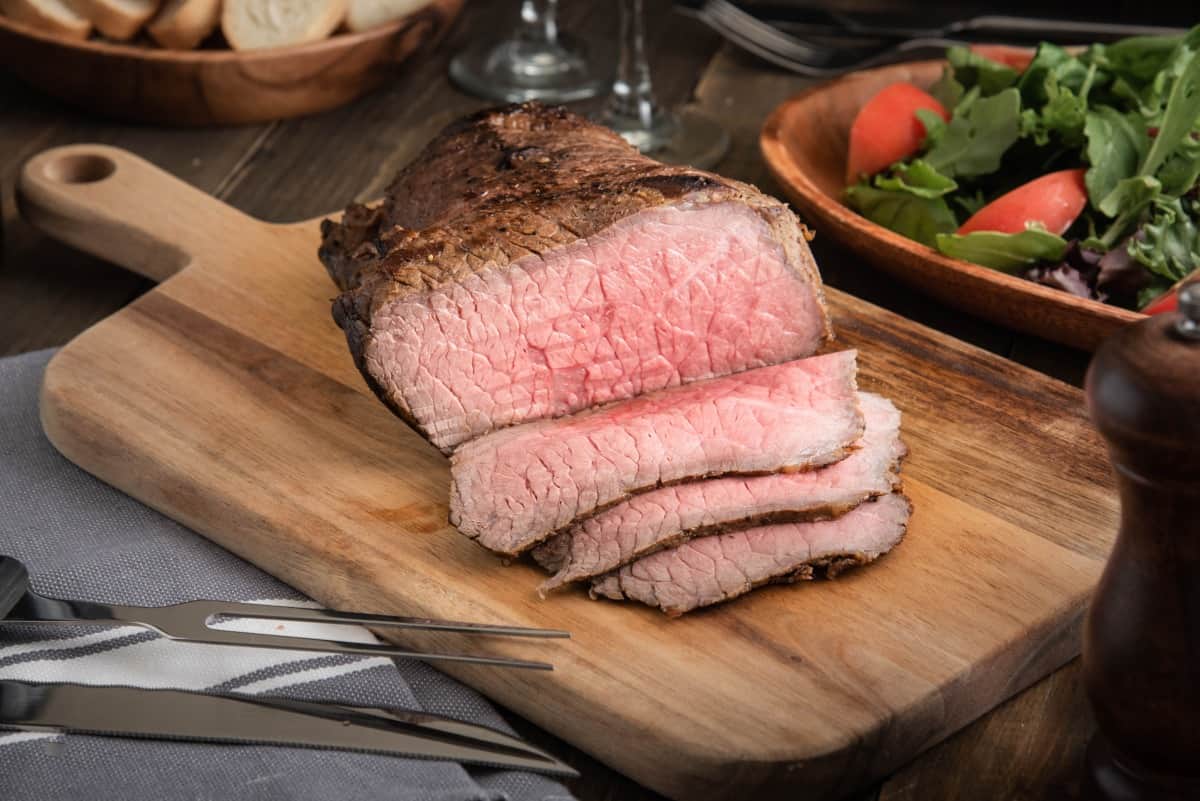
With these roasts coming in at anywhere between 2 and 5lb. In weight, and at great value for money, you can eat as much as you like without scaring your bank manager.
On average a serving of 4 to 6oz. per person is more than enough when coupled with all the roast dinner trimmings.
The real question here is, how much can you, and your guests, eat?
How to Prepare Bottom Round Roast for Grilling or Smoking
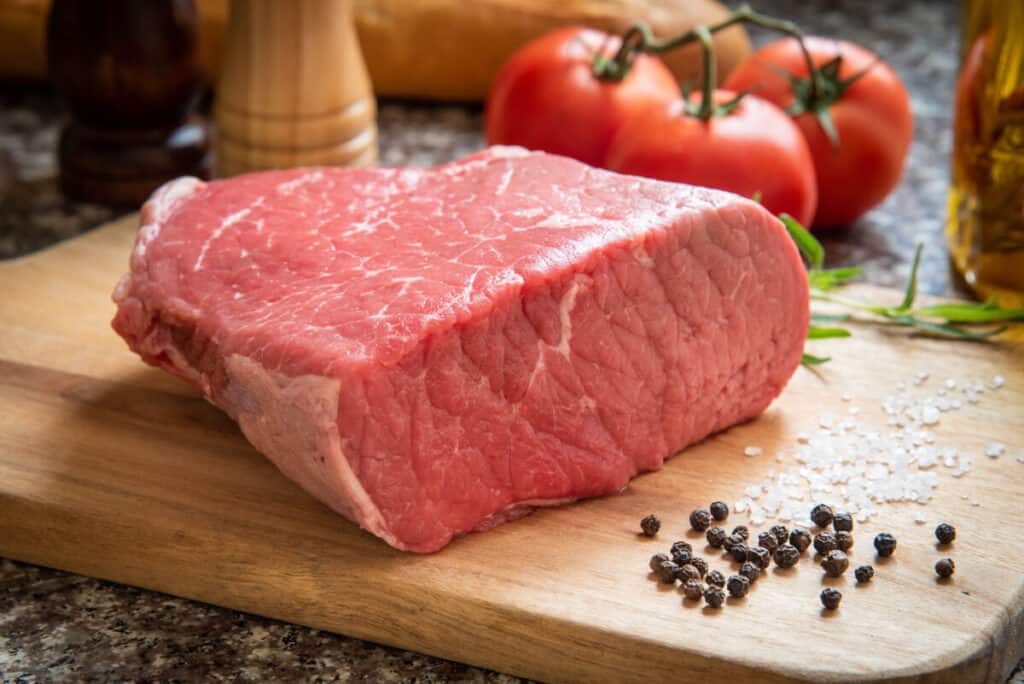
The Bottom Round roast will come ready trimmed and super lean, so there is no preparation required from you.
If you plan to slow cook it in the smoker, then a good rub with an oil-based marinade will add flavor and help keep it moist as it cooks.
Braising, the art of cooking a joint via liquid and steam, is the best way to cook any tough and lean meat cut, such as the Bottom Round roast. This can be achieved in a sealed pot with added liquid to steam and baste the roast as it cooks.
Another great way to cook it is super low and slow in the smoker, allowing you to baste it at regular intervals to replace the lost juices.
When I’ve smoked it before, I like to hit it with smoke for just half to 45 minutes, and then wrap it in foil or pink butcher paper to preserve as much moisture as possible. Then I give it a quick all over sear at the end to take advantage of the flavorful Maillard crust.
How to Cook it on a Grill or Smoker
Due to its lack of fat cap, marbling, and fat ribbons the Bottom Round Roast requires intervention from us, as the grill master, to add plenty of moisture as it cooks in order to keep it juicy and tender.
If grilled on a high heat, it will become dry and chewy and not very enjoyable, so we prefer the smoker or a braising method over the grill.
Because we love a good smoke of the wood variety, here is our guide to a great Bottom Round roast smoke:
- Remove your marinated/seasoned/dry-rubbed Bottom Round roast from the fridge and allow it to temper. Approximately 45 minutes for a 3lb. Joint will do here.
- Prepare your smoker with your smoking wood of choice and heat to around 225 °F.
- Place the whole roast into the smoker, preferably with a remote thermometer placed in the center, so that an accurate temperature can be checked periodically.
- After 45 minutes to an hour, check and baste with oil or more marinade to keep the roast moist. or take my advice and now wrap it in foil or pink butcher to preserve as much moisture as possible.
- Repeat step 4 until the internal temperature reaches the desired level of ‘doneness’:
- Rare — 115 °F (Finished temp of 125 °F) approximately 80 minutes.
- Medium Rare — 125 °F (Finished temp of 135 °F) approximately 90 minutes.
- Medium — 135 °F (Finished temp of 145 °F) approximately 100 minutes.
- Remove the roast from the heat and allow it to rest for 10 to 15 minutes.
- Cut and be suitably impressed by this budget cut of meat.
Buying Bottom Round Roast
The family of round roasts have long been a staple of the economic diet, and as such the Bottom Round roast is readily available at both supermarkets and butcher’s alike.
It is a huge and nutritious piece of meat that is popular for feeding the whole family, so you should have no issues finding it in store or online when you place an order for your weekly shop.
Just bear in mind that as it is not considered to be a ‘quality’ cut as such, it will not be listed on the more expensive online meat markets.
Average Price
This lean looking son of a gun gets you a lot of meat for not a lot of dollars, which is fantastic whatever your budget. At the time of writing, the price for good quality Bottom Round roast is, on average, between $6.99 and $9.99 per lb.
Where to Buy it Online
Online shopping takes the hassle out of all types of shopping, and meat shopping is no exception. A quick peruse of the internet shows that the Bottom Round roast is available at a handful of online meat suppliers, with the following being our favorite:
Porter Road
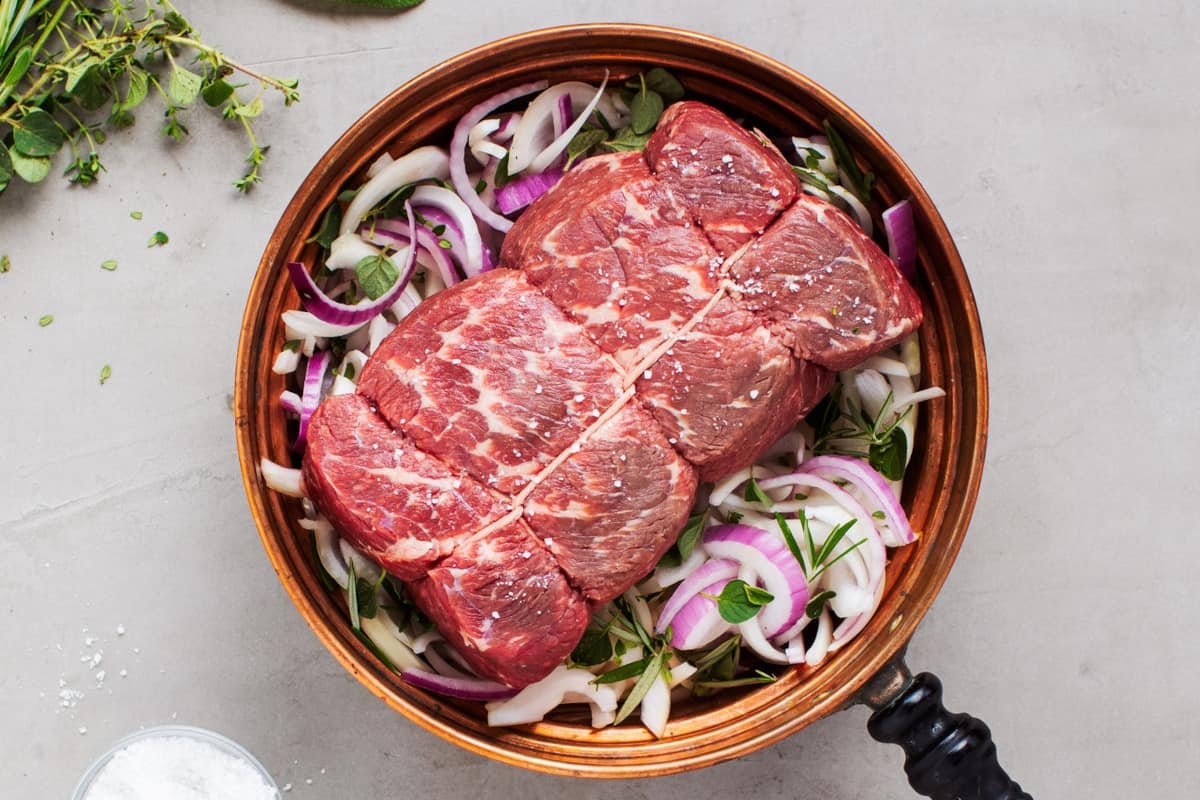
This roast is sourced from pasture-raised, hormone and antibiotic-free cattle.
Coming in between 2.3 and 2.8 lbs, this cut is lean and should be cooked very rare, then sliced very thinly, to get the best result.
This roast ships fresh, not frozen.
Conclusion
So all in all, what’s not to like about the bottom round roast? It’s readily available, lean for the harder to please eaters that don’t like fat and gristle, it’s great value for money, and it can be used in a variety of ways.
So, if you are looking for an easy and cost-effective way to feed the family or a large gathering of friends, you’ve just found it. Whether you go simple or jazz it up with a great rub or marinade, the bottom round roast will deliver on so many levels.
Do you love this cut just as much as we do, or do you avoid it like the plague?
Let us know whether you agree with us in the comments below, and we’d love to see how you turn it into something fancy.


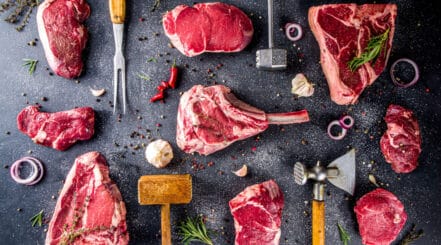
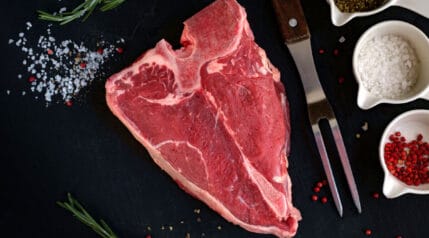
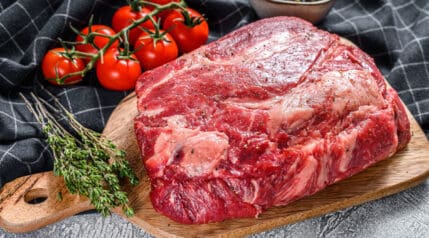
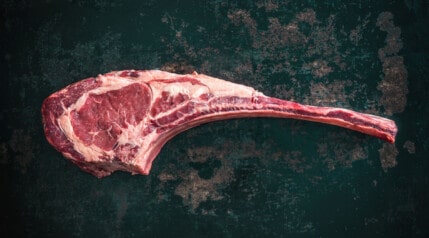
Thank you. I found this site very informative.
Thanks, George. Always nice to hear!
Huh, learn something new every day is right. And I learned a lot. Thank you so much. Trying the roast with the onion gravy tonight. 🤞
i am looking for a recipe for rotisserie bottom round, it’s 2.69 lbs. i’m going to marinade it and hope for the best…any suggestions?
Just this past week I cooked a bottom round roast in the Ninja Foodi pressure cooker. After browning on all sides it got a generous dusting of salt plus about the same amount of garlic granules. Then a bit of thyme, a bit more of oregano and about the same amount of marjoram. I also put the last bit of spicy Montreal steak seasoning in the pot but it was only a scant teaspoon. Finally a glug of ginger teriyaki sauce and a cup of water.
The previous bottom round roast I did in the pressure cooker I did not let it cook long enough and was a little tough. This time I went for 3½ hours on LOW pressure and it was amazingly
tender and sooooo flavorful! Great dinner with green beans with small Yukon gold potatoes cooked in them and it made fabulous roast beef sandwiches the next day.
I buy beef boneless bottom round roasts and sear them in my biggest cast iron skillet. Then lay it on a bed of chopped garlic and red onions in a big roasting pan.
While the oven is preheated to 300° F, I put ice cubes containing approx 1Tblsp. fresh garden-grown oregano, cubes of fresh Russian basil, and cubes of fresh cilantro frozen in petite cupcake tins during the summer and kept on hand in my freezer for year-round use.
I toss 2 or 3 cubes each in a roasting pan. I also put cumin, tarragon, bay leaf, turmeric and black pepper approx. 1 half – 1 Tblsp each in pan.
I pour Beef Bone Broth and vegetable broth to fill the pan halfway, put lid on, and pop in the oven for 1 hour, the 1st hour( this is usually a 3-5 pound roast) at 1 hour I put the rest of vegetable broth in pan and back into oven another hour or so, the 2nd hour.
At that time, the replenished liquid is the remainder veg. broth and new plain unsalted beef broth another hour, 3rd hour.
Now I put as many peeled carrots 3-4″ in length of 1 half – 1 ” diameter sticks in around the meat sides up to the top of the meat as I can and bring the liquid up to the top of the meat, put the top on and oven it another hour.
Hour 4. check carrots for tenderness( usually still crunchy). Move them around a bit, check the liquid level, and cook for 1 hour.
Hour 5. Carrots are usually soft but firm by now. Add 1 half red potato with eyes and spots trimmed away as many as will fit with lid around sides and top of the meat and replenish fluid.
Hour 6. Now check the pan every 10-15 minutes for tenderness until the potatoes are done but not squishy. Replenish N liquid each time.
When potatoes are done, turn off the oven, put the lid back on, and let it all stand for half an hour, or as long as it takes to make a garden salad, fresh avocado, olive oil, balsamic vinegar dressing, and dinner rolls as side.
Pull roast, dinner rolls, garden salad, and dress and place on to set table. Slice 1 third of the meat, use a slotted spoon for pan’s carrots and potatoes. Maybe have slices of fresh mangos, avocados, peaches and / or plumbs on a plate, with homemade fresh horseradish sauce on the side for meat.
Stand in the front doorway and holler, “It’s SOUP, Kids! Come and get it!!” then step aside while the stampede of friends and family swarm in and eat every morsel and sop up every drop with a quickness.
They say, “KatyBeth, U may B a pill 2 live with now and then, but Mama, no one is gon to run away from home or leave U Bcuz U can’t cooK!”. I reply, “Thank U…I think?!”.
Thanks Katherine, sounds great! 🙂
Great info- Thanks! I just put a 2.5 lb. bottom round in the Instant Pot pressure cooker.